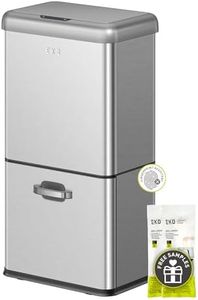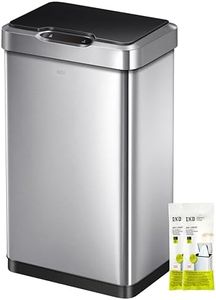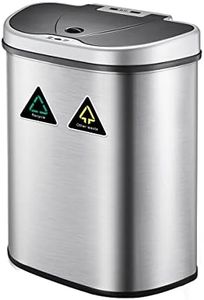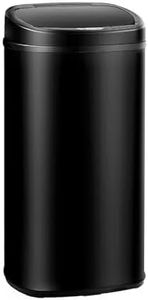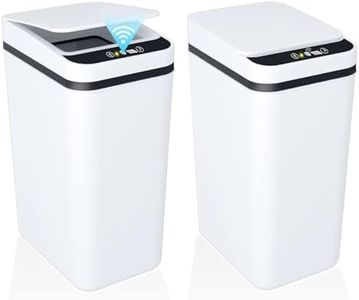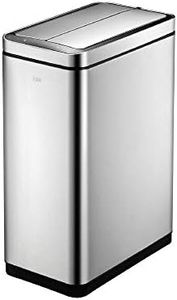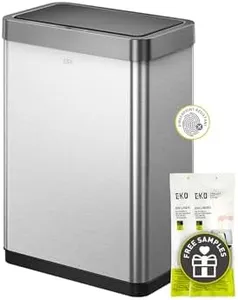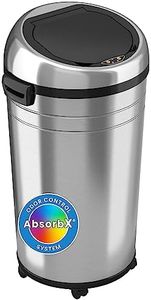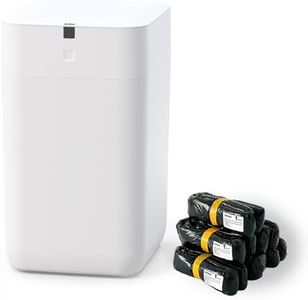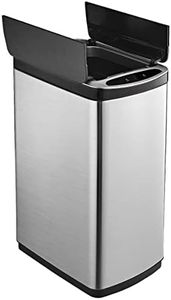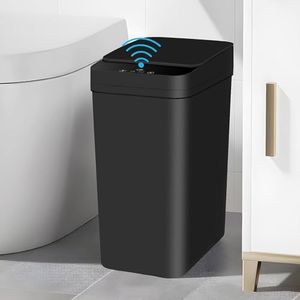We Use CookiesWe use cookies to enhance the security, performance,
functionality and for analytical and promotional activities. By continuing to browse this site you
are agreeing to our privacy policy
10 Best Touchless Trash Cans
From leading brands and best sellers available on the web.By clicking on a link to a third party's website, log data is shared with that third party.
Buying Guide for the Best Touchless Trash Cans
Choosing a touchless trash can can make daily life more hygienic and convenient, especially in kitchens or bathrooms where minimizing contact is helpful. When considering which one to buy, it's important to look beyond merely the touchless feature and consider size, sensor quality, lid mechanism, and more. Thinking carefully about how you'll use the trash can—how much waste you generate, where you'll place it, and how often you want to empty it—can help guide you to the right choice. Let’s go over the most important features to look at and how to decide what's the best fit for your needs.CapacityCapacity tells you how much trash the bin can hold, usually measured in liters or gallons. This is important because a too-small trash can will need to be emptied often, while a very large one might take up too much space in your room. Smaller sizes (under 10 gallons/40 liters) work well for bathrooms, bedrooms, or offices where trash build-up is slow. Medium sizes (10-13 gallons/40-50 liters) are standard for most kitchens and handle regular household waste nicely. Larger sizes are more suitable for big families or shared spaces. Thinking about your household size and where you’ll place the can is the best guide here—a single person or couple might be fine with a smaller unit, while a family or those who cook at home a lot may benefit from a larger bin.
Sensor Type and RangeThe sensor detects motion to open the lid automatically, which is the core of the touchless experience. Different cans use infrared or ultrasonic sensors, and their range—the distance from the sensor where movement triggers the lid—varies. Short-range sensors require you to wave your hand close to the lid, which can prevent accidental openings but requires more precision. Longer-range sensors are more sensitive and open with less effort but might trigger unintentionally as someone walks by. Think about where you'll place the can—if it's in a high-traffic area, a shorter range is often better; if hands are usually full when approaching, a longer range may be more convenient.
Lid Mechanism and SpeedThe lid mechanism is how the lid opens and closes, usually controlled by a motor. This matters because a slow or noisy lid can be frustrating, while one that slams shut can be loud and even risky. Fast, smooth, and quiet operation is generally preferable, especially in households with kids or pets. Some cans also have a soft-close feature to prevent slamming. If you need to deposit trash quickly or frequently, look for a can that specifies quick and quiet action, matching your environment and personal preference.
Power SourceTouchless cans need power, usually from batteries or, sometimes, an AC adapter. Battery-operated cans are more flexible in placement, while plug-in models save you the cost and hassle of changing batteries but need to be close to an outlet. If placing the can in the middle of a room, battery power is handy; if it's always by a power source, a plug-in type may be more suitabLe. Consider your room layout and how often you want to deal with changing batteries.
Bag Compatibility and Liner RetainerNot all trash cans work well with every trash bag, and a liner retainer keeps the bag securely in place and hidden from view. This matters because ill-fitting bags can slip inside or be difficult to remove, causing messes. Some cans require special bags, while others work with standard kitchen trash bags. If convenience and ease are most important, look for a model that works with standard bags and features an easy way to hold the liner in place. This ensures the can is simple to clean and bags are easy to change.
Material and Build QualityThe material—usually plastic or stainless steel—affects both how the can looks and how long it lasts. Metal cans, especially stainless steel, look sleek and are easy to clean, plus they're resistant to odors and fingerprints (especially those with special coatings). Plastic is lightweight and usually less expensive, but may absorb smells over time and can be less durable. Choose based on your space, desire for easy cleaning, and how much the look of the trash can matters to you.
